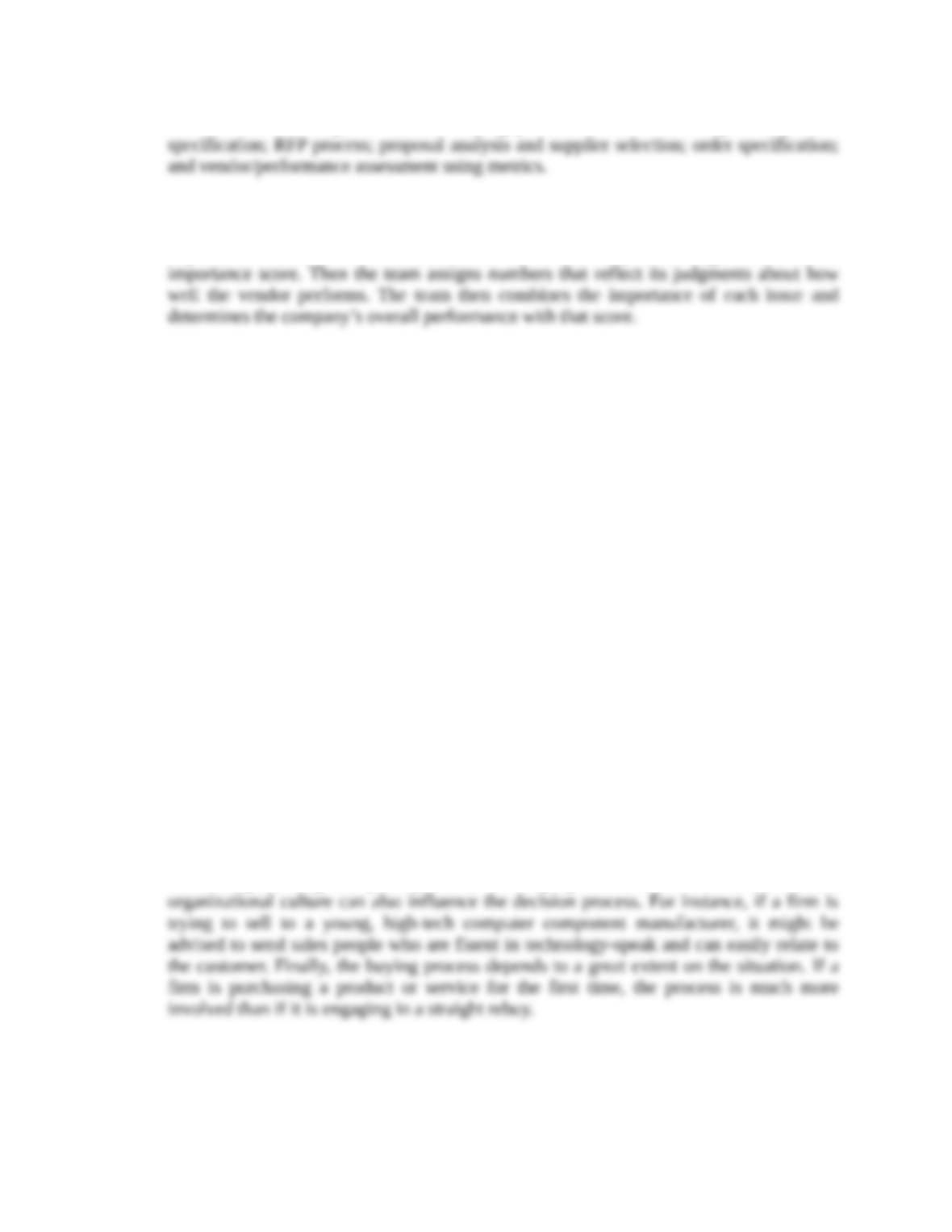1.1.1.1.1.1.1.4 Chapter Overview (“Summing Up”)
LO1 Describe the ways in which business-to-business (B2B) firms segment their markets.
All firms want to divide the market into groups of customers with different needs, wants, or
characteristics who there-fore might appreciate products or services geared especially toward
them. On a broad level, B2B firms divide the market into four types: manufacturers or service
providers, resellers, institutions, and government. Manufacturers and service providers purchase
materials to make their products and components and offer expertise to help run their businesses,
such as computer and telephone systems. Resellers are primarily wholesalers, distributors, or
retailers that sell the unchanged products. Institutions include nonprofit organizations such as
hospitals, schools, or churches. Finally, governments purchase all types of goods and services,
but in the United States, defense is among the largest
expenditures.
LO2 List the steps in the B2B buying process.
Similar to the B2C buying process, the B2B process consists of several stages: need recognition;
product specification; the RFP process; proposal analysis, vendor negotiation, and selection;
order specification; and vendor performance assessment using metrics. The B2B process tends to
be more formalized and structured than the customer buying process.
LO3 Identify the roles within the buying center.
The initiator first suggests the purchase. The influencer affects important people’s perceptions
and final decisions. The decider ultimately determines at least some of the buying decision—
whether, what, how, or where to buy. The buyer handles the details of the actual purchase. The
user consumes or employs the product or service. The gate-keeper controls information and
access to decision makers and influencers. In B2B situations, it is likely that several people,
organized into a buying center, will be involved in making the purchase decision. The vendor
must understand the relationships among the participants of the buying center to be effective. A
firm’s organizational culture can also influence the decision process. For instance, if a firm is
trying to sell to a young, high-tech computer component manufacturer, it might be well advised
to send sales people who are fluent in technology-speak and can easily relate to the customer.
LO4 Describe the different types of organizational cultures.
Firm culture consists of unspoken guidelines that employees share through various work
situations. They generally can be classified as autocratic, such that one person makes most
decisions; democratic, where the majority rules; consultative, in which one person makes
decisions based on the input of others; or consensus, which requires all members of the team to
reach collective agreement.
LO5 Detail different buying situations.



